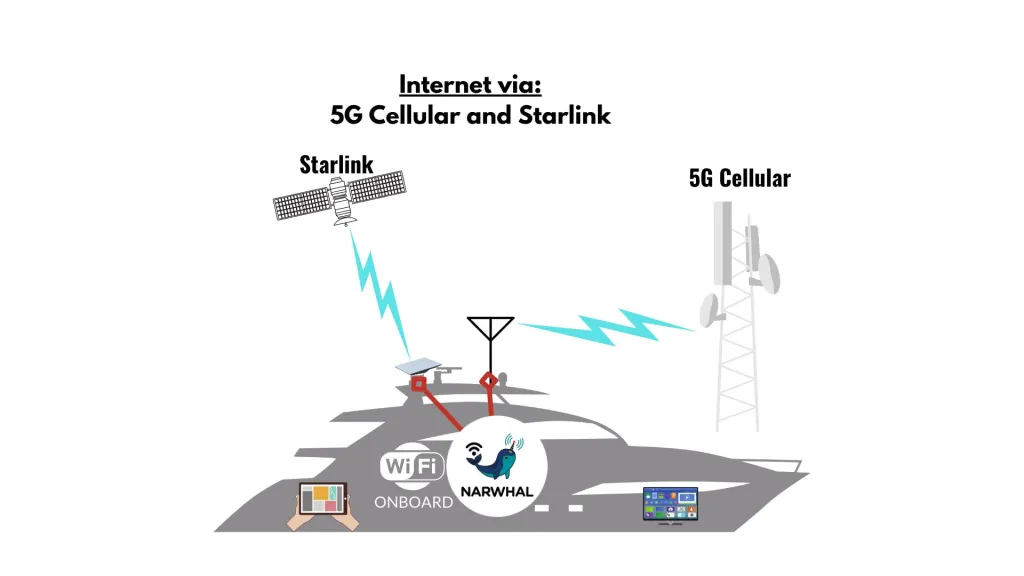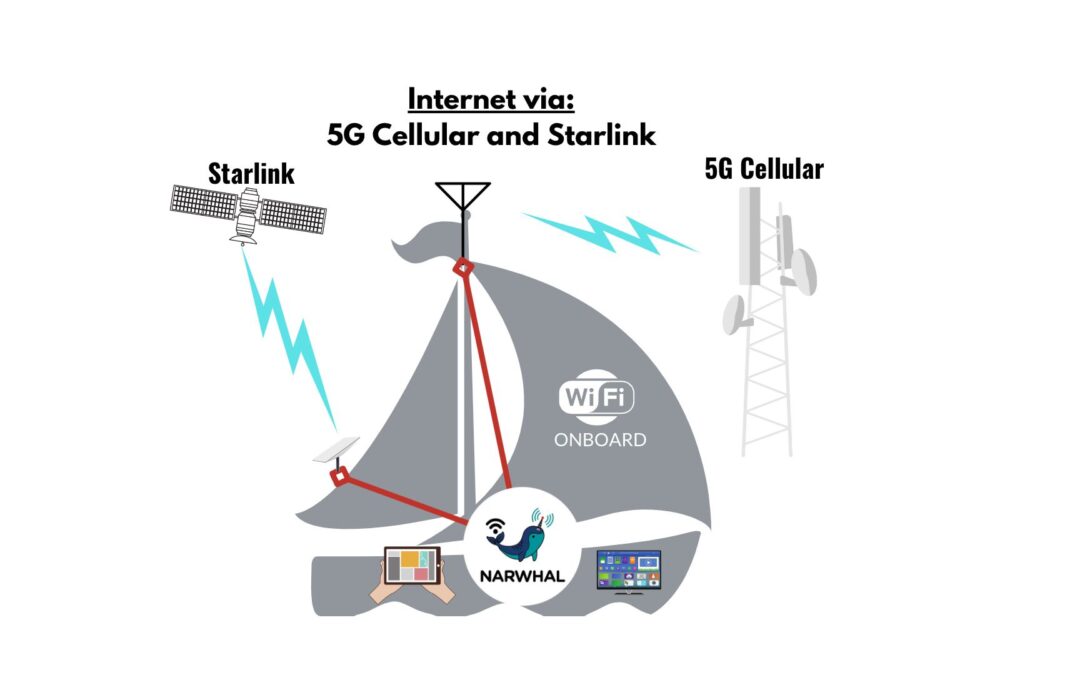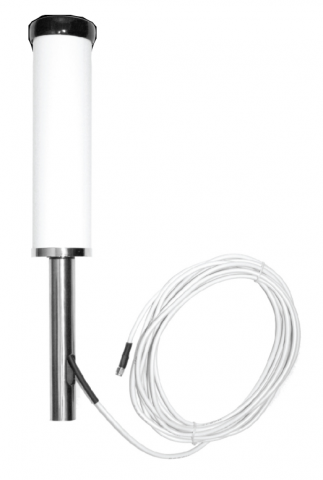Cellular Integration Makes Starlink Better!
No technology or solution is perfect. There are always pros and cons, advantages and disadvantages to every option. This is why we tend to find more than one solution to a problem and either pick the one that most closely fits our needs or end up choosing more than one. Narwhal helps solve the complexity of using more than one connectivity option to remain connected on board our vessels. Today, on the heels of Starlink’s latest terms of service update, we look at why we use Cellular 4G/5G data AND Starlink together. Why not just one or the other?
Starting October 1, 2023 in-motion data via Starlink at vehicle/vessel speeds above 10mph (~8.5 knots) will cost extra which means fast sailing vessels and a huge percentage of power boats and yachts will need to evaluate whether Starlink is still the best solution for their boat. We believe that the right solution is Starlink AND Cellular, and Narwhal is the easiest and most powerful way to provide this combination to nearly any boat or yacht.
First, let’s look at the Pros and Cons of Cellular and Starlink independently…
 Cellular 4G/LTE/5G
Cellular 4G/LTE/5G
Advantages:
- Cellular networks have a well-established history of continuous enhancement.
- Reliable cellular service is available worldwide.
- High-speed data transmission through 4G/LTE/5G supports most applications.
- Extensive global coverage is provided by cellular networks.
- Affordable pricing for cellular data.
- Compact and energy-efficient cellular equipment.
- Service works at any vehicle or vessel speed without extra equipment or fees.
- Cellular signals can penetrate obstacles like trees, ceilings, and walls.
Disadvantages:
- Dead spots due to antenna placement and geography.
- Cellular Data plans do not provide unlimited usage plans.
- Terrestrial nature limits coverage over open oceans beyond 15-35 miles.
- International roaming on cellular networks can be complex.
 SpaceX Starlink
SpaceX Starlink
Advantages:
- Starlink’s novel satellite network offers innovation.
- High speeds from Starlink accommodate most applications.
- Global coverage is provided, including oceans.
- Cross-country coverage and roaming are easily facilitated.
- Competitive pricing compared to other satellite options.
- Unlimited land data usage within Starlink coverage.
Disadvantages:
- Current Starlink network reliability is not absolute.
- Changing terms of service for Starlink.
- Coverage limitations due to regulatory agreements.
- Obstructions can intermittently disrupt Starlink service.
- Starlink equipment consumes more power compared to cellular devices.
- Starlink equipment is larger than cellular counterparts.
- Additional billed charges for ocean usage.

After analyzing the different advantages and disadvantages of each technology we can see that many of the strengths for one are weaknesses of the other. What happens when we use them together?
Maximizing Benefits Through Pairing: By capitalizing on the strengths of both cellular and Starlink technologies, we can achieve the following:
- Power Efficiency: Utilize cellular connections during high-speed passages to conserve Starlink usage, subsequently saving power and money.
- Seamless Coverage: Combine cellular and Starlink connectivity to eliminate dead spots and interruptions caused by different factors, ensuring a reliable always-on connection.
- Network Optimization: Leverage cellular data to alleviate congestion issues in the Starlink network, particularly benefiting real-time audio and video communication.
- Redundancy: Establish a backup connection in case one connection experiences disruptions, ensuring continuous connectivity.
- Cost Efficiency for Coastal Cruising:
- While along the coast, switch between cellular and Starlink connections based on availability.
- Reserve Starlink usage for stationary scenarios, such as video streaming, to avoid depleting cellular plan data when entertainment becomes the primary focus and Starlink unlimited “land” data is available.
- Only activate Starlink’s Priority Data ($2/GB) only under specific conditions: a.) Data connection required. b.) Cellular service unavailable. c.) Speeds exceed 10mph and/or ocean coverage area is traversed. If any of these conditions are not met, standard Starlink usage can be maintained, supplemented by the cellular backup, without incurring additional priority data costs


 Cellular 4G/LTE/5G
Cellular 4G/LTE/5G SpaceX Starlink
SpaceX Starlink